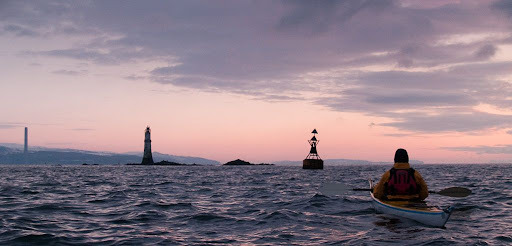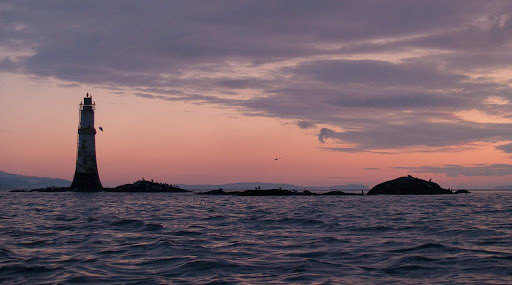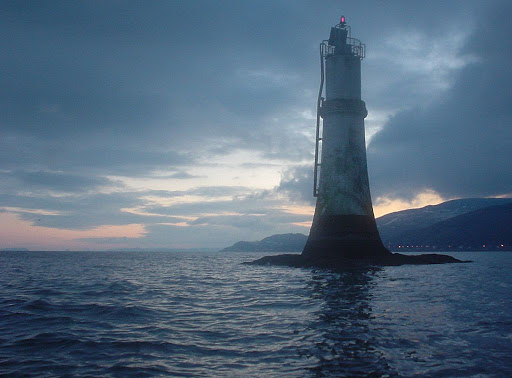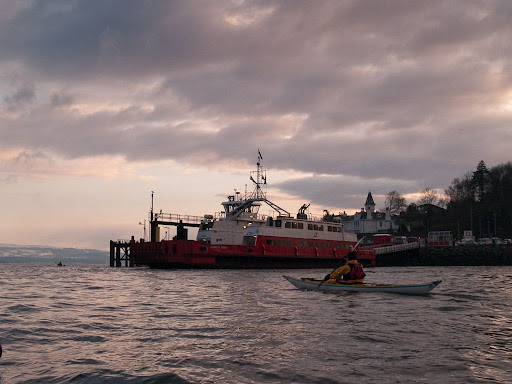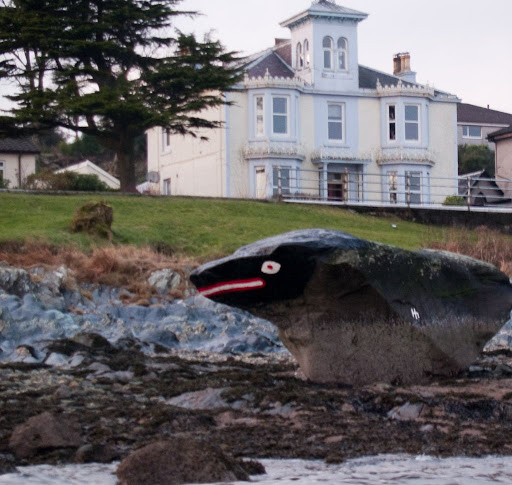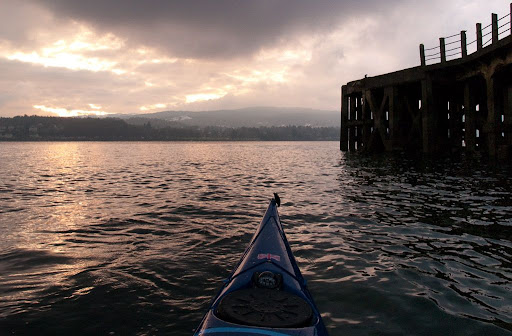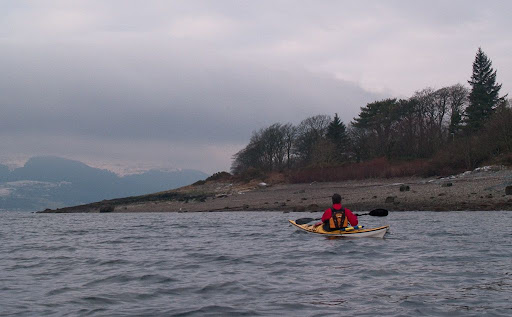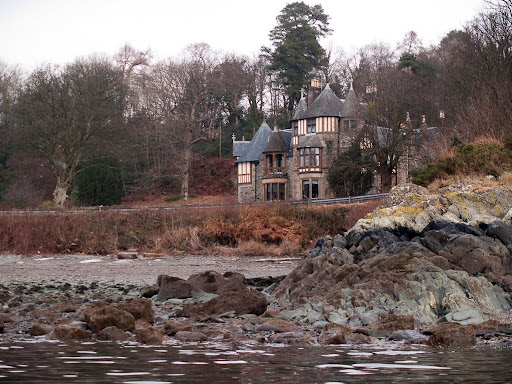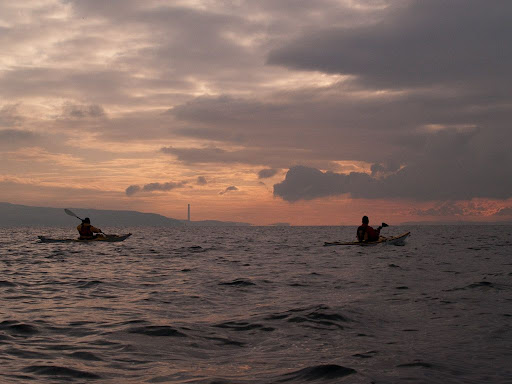
From the Gantock Rocks we had to cross the main shipping channel in the Clyde on our return to Lunderston. To the south of us, the steady white flash of the Cowal mid channel marker showed us the area of highest risk. We put our head torches on and paddled at a steady 8km/hr across the 2.8km to the Lunderston shore.

The sun had set some time ago and the cold air gripped us as we made our way over the snow covered sands to the car park.

The dying embers of the day still glowed round the smokeless chimney of Inverkip powerstation. Its height and bright red aircraft warning lights make it the best marine navigation beacon on the Clyde. I will be very sorry when it is demolished to make way for a housing estate.

Just as we were wrapping up, the very business like offshore tug/supply vessel, MV Kingdom of Fife made her way down the channel at 10.5 knots. She was built in 2008 by Damen Shipyards of the Netherlands. She is 61.20m long by 13.50m beam and a gross tonnage of 1459.00t. We were quite glad to have cleared the channel before her arrival.

Altogether we had covered 30km on a lovely circular route in the Clyde. It proved a very variable route with lots of interest and the contrast between the docks at Greenock and the glaciated mountain confines of Loch Long was quite dramatic. Once again I am grateful to Jim and to Phil who lifted and laid both my kayak and myself.


